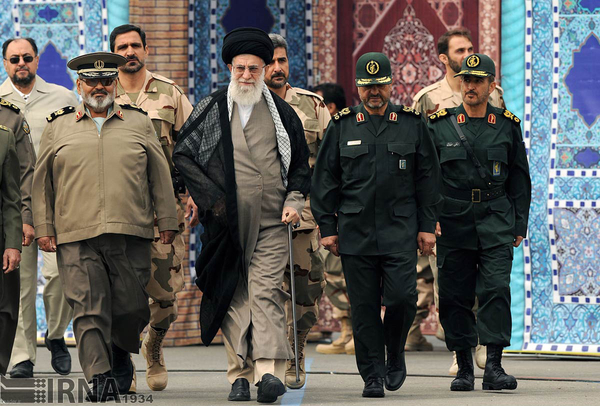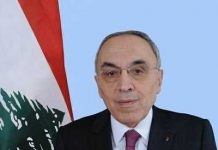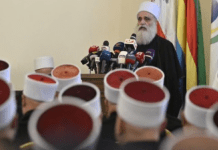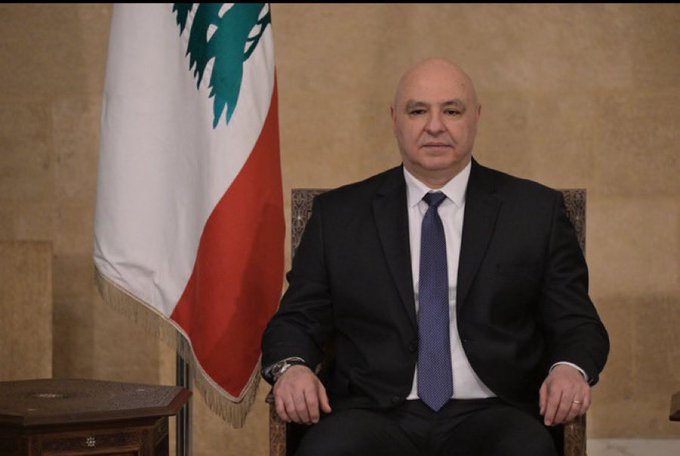Sanctions Relief Is Not the Key to Iran’s Economy
Patrick Clawson/Washinton Institute/December 25/15
Rouhani’s election pledge to improve the economy by resolving the nuclear issue is not working particularly well because of the many domestic policy challenges.
Iranian president Hassan Rouhani has been eager to schedule the nuclear deal’s Implementation Day before the February midterm elections in order to demonstrate that the economy is on the mend. But a December 21 International Monetary Fund (IMF) report documents the many challenges facing Iran’s economy even if sanctions relief arrives soon, and the 2016/17 budget that Rouhani sent to the Majlis on December 22 does little to address those challenges.
A WEAK YEAR
Rouhani’s election promise to restore economic growth by completing a nuclear deal looked pretty good in 2014/15 (Iranian years begin March 20). The modest easing of sanctions and improved confidence contributed to 3% GDP growth that year, while consumer prices rose only 15% compared to 35% the year before. On September 6, 2014, Rouhani told an audience in Mashhad, “Today, we can thankfully announce that we have passed through the recession.”
But then things went sour. The IMF forecasts that in 2015/16, GDP will end up someplace between shrinking 0.5% and growing 0.5%, while consumer prices will increase at the same rate as last year. Unemployment is expected to rise from 10.4% in 2013/14 to 11.9% this year. The Tehran Stock Exchange index is 30% below the January 2014 peak, and imports are forecast to fall 10% this year.
On September 9, the ministers of defense, labor, economy/finance, and industries/commerce wrote to Rouhani complaining about economic policy. In mid-October, his administration adopted a stimulus package, lowering the interbank interest rate, reducing bank reserve requirements, and providing lending facilities for domestically made consumer durables and non-oil exports.
NOT MUCH DONE TO RESTORE ECONOMIC ORDER
Former president Mahmoud Ahmadinejad’s administration was rightly savaged for its mismanagement and opacity, yet the Rouhani team has not lived up to the high hopes that it would run a tighter ship. A year and a half into his term, as the IMF report delicately puts it, “The exact amount of public debt is not known precisely, as only a limited part of debt is recorded…Preliminary estimates of Iran’s public debt are expected by end-2015.” The debt includes an unknown amount of arrears owed to businesses run up in the past two years: “The authorities were finalizing an inventory of all government arrears and a strategy to clear them.” Moreover, information is fragmentary at best about the finances of a long list of governmental and quasigovernmental bodies, including the subsidy-providing government agency, regional governments, nonfinancial public enterprises, regional governments, and public foundations.
The banking system is in bad shape as well. The section of the IMF report covering Iran’s banks is titled “Unlocking Balance Sheets: An Immediate Priority to Support Growth,” and it opens with an ominous warning: “The complexity and severity of the challenges facing the banking system require immediate action.” Thus far, the Rouhani team has accomplished little on this front: “[The authorities] explained that an initial financial health check of banks had been finalized, suggesting substantially higher levels of [non-performing loans], and they expect to initiate a more detailed assessment of the largest banks soon.”
Rouhani has also failed to tackle the problem of overvalued currency. The IMF report points out that “overvaluation…persisted over the last year,” noting that “economic fundamentals would have called for a depreciation.” The December 22 budget draft compounds the problem by assuming that the 2016/17 exchange rate will remain unchanged at 29,970 rials per dollar. Unlike the Rouhani team, Ahmadinejad took tough action on this issue when needed — in late 2012, facing the consequences of heavy U.S. and European pressure on oil sales, his administration bit the bullet and implemented substantial devaluation, which boosted government revenue in rials from the remaining oil sales and also stimulated industry and agriculture. Local products became more attractive as import prices rose, and exports earned more.
In general, economists recommend “countercyclical” fiscal and monetary policy: that is, budget surpluses and high interest rates when times are good, budget deficits and lower interest rates when the economy is weak. The Rouhani team has done the opposite. As the IMF noted, “Iran’s fiscal policy has been procyclical, which usually leads to lower growth.” Since 2012, infrastructure investment declined by 3 percentage points of GDP, and human capital investment (education and health) by 2.5. Monetary policy was even more procyclical: expansionary in good times, contractionary in bad times. In short, the Rouhani team has done only modestly better at fiscal and monetary policy than its much-criticized predecessors.
LITTLE PROGRESS PLANNING FOR THE MEDIUM TERM
Having made much of reviving the long-respected Plan and Budget Organization abolished under Ahmadinejad, Rouhani has not been able to gain support for a new five-year development plan, the sixth since the 1979 revolution. In July, Supreme Leader Ali Khamenei issued a thirty-one-point general instruction about what should be in the Sixth Plan. Later, the Expediency Council — a body headed by former president Akbar Hashemi Rafsanjani and charged with resolving disputes — became dissatisfied with the government’s progress in preparing the plan and stepped in. Upset at this action, Rouhani stopped attending the council’s meetings in mid-September, a fact that council leaders made obvious by releasing a photo of the November 28 meeting with his chair empty. Some reports suggest the Sixth Plan was submitted this week along with the budget, as the Majlis had demanded and Rouhani had resisted, but few details are available.
Perhaps the biggest challenge that the Sixth Plan needs to tackle is how to create jobs for a reported 600,000 new market entrants each year. Although the IMF forecasts that GDP growth will increase to 4% per year, it also predicts that unemployment will rise for the next two years, then return to the current rate of 11.9% five years from now. And that is on the optimistic assumption that policies change to favor job-creating sectors rather than the heavy industry favored until now. The IMF forecast is a “scenario with high growth following sanctions relief”; yet Iran’s unchanged “employment elasticities” — the technical term for the relationship between GDP growth and job creation — “would still see unemployment rising to 14%.”
These unemployment figures are artificially depressed by the poor prospects for Iran’s increasingly educated young women, many of whom never enter the labor force. According to the World Bank, women’s labor force participation in the Islamic Republic is 18% — lower than Turkey (32%), Egypt (26%), and even Saudi Arabia (22%). If Iranian women participated in the labor force at the same rate seen in Turkey, unemployment would currently be 18%.
BETTING ON MODERATES WHO ARE NOT PARTICULARLY COMPETENT?
Throughout his election campaign, Rouhani offered a simple analysis: the economy’s main problem was sanctions, and a nuclear deal was the best way to relieve them. That formula is not looking so good today. Not only will the benefits of sanctions relief arrive slowly, but the drop in oil prices has highlighted Iran’s overreliance on that resource. Khamenei’s “resistance economy” formula for stimulating the non-oil sector is looking better and better as a way to create badly needed jobs. Meanwhile, Rouhani’s secondary election theme — restoring competent management in place of the Ahmadinejad team’s corruption and ineptitude — looks less and less impressive. Perhaps Rouhani will achieve the optimistic targets he set out in a December 23 speech: 5% growth, 9.9% inflation, 75% of government revenue from non-oil sources, and a 90% (nominal) increase in development spending. But many Iranian economists are skeptical.
In an October IMF press release, Martin Cerisola, the head of the team that prepared this month’s Iran report, was quoted as follows: “Risks to the outlook are significant, and longer-term prospects will depend crucially on the depth of reforms that are undertaken…Ultimately, if mild reforms are implemented, the sanctions relief will have only a moderate positive impact on the economy.” That statement ably sums up the relative weight of sanctions relief and domestic policy as influences on Iran’s economy. The oft-heard mantra about Iran policy — that the West needs to help moderates like Rouhani — looks pretty thin if those moderates do little to help themselves. Their problems in the economic sphere are overwhelmingly their own doing, not a result of any actions the West does or does not take.
**Patrick Clawson is the Morningstar Senior Fellow and director of research at The Washington Institute.






















